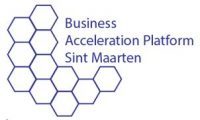General
The socio-economic impacts of Hurricane Irma are visible and if nothing is done may have significant negative effects on the income (poverty) level of a large portion of Sint Maarten’s population. Rapid economic recovery and reconstruction are needed to increase income and avoid further job loss. Substantial access to financing is needed to allow the business sector to restart, grow and contribute significantly to the overall economic recovery of Sint Maarten.
The country’s economy is predominantly tourism-based. Restaurants, hotels, yachting, and other tourism-related sectors, account for approximately 45 percent of Sint Maarten’s GDP. The tourism sector contributed 73 percent to the country’s total foreign exchange income in 2016 (Source: The World Bank).
Hotels and restaurants
The hotel- and restaurant industry have been severely affected by the passing of Hurricane Irma, varying from severe damage requiring extensive repairs, to others damaged beyond the point of repair needing to completely rebuild.
Smaller hotels have reopened, which has started the return of room inventory, Larger hotels in the luxury segment are needed to increase the room inventory to meet the demand of loyal and new travelers who have returned to Sint Maarten. The larger hotels, however, are taking longer in coming back online, due to either rebuilding with extensive changes or completely rebuilding. The first large hotel that has reopened is the Sonesta Maho and Ocean Point. In addition, the airlines are adding flights based on available room inventory on the island. Sint Maarten is in need of quality 5-star and boutique hotel accommodations. The discerning traveler who wishes to stay in such luxury accommodations is now forced to go to the surrounding islands such as Anguilla, St. Kitts and St.Barths.
Transport
Cruise Industry
Sint Maarten’s harbor is a significant port for cruise tourism in the Caribbean, with 1.7 million cruise passengers visiting per year. On Boxing Day, Dec 26th, 2018, Port St.Maarten announced the busiest cruise ship day with a record amount of 36,800 passengers and crew numbers on the Island. In January 2019, Port Sint Maarten was awarded the prestigious PAMAC award for being the “destination of choice” by cruise passengers and on April 23, 2019, at the Seatrade Cruise Global Conference, it was revealed that St. Maarten scored a 9.3 of a total 10 for cruise passenger destination experience. All of this despite the devastating damages caused to the facilities and the tourism product. A need for additional experiences for cruise tourists has also been conveyed by the FCCA (Florida Caribbean Cruise Association), such as cultural and historical experiences.
Air Travel
Notwithstanding the challenges of widespread devastation at the terminal building, financial constraints of rebuilding and less than ideal environment for passengers, the PJIAE Airport remains a hub for private and commercial travel with a large network of connecting flights across the Caribbean. Private jets, paying top dollar for accommodations, can be seen parked on the tarmac like Lego toys.
Pleasure Yachts
The mega yacht industry continues to flourish with 5 months of the year large-scale residency and spin-off businesses to meet such luxury requirements have grown considerably. The inventory and requirements of these floating hotels way outstretch the supply and call for expansion of the range of Marina accommodations.
On any given day the overflow of mega-yachts is visible, similar to a flotilla, in the open bays of Philipsburg and Simpson bay.
Diversification Required
While the economy of Sint Maarten in 2019 showed visible signs of a revival, the country is only expected to return to its pre-Hurricane Irma-GDP level by 2025.
External private financing from private investments, joint ventures, and loans from abroad will be needed to finance the reconstruction of private property and businesses. Although the current economic indicators are promising, the reality is that St Maarten has a single-pillar economy, depending on tourism. This pillar has proven to be the bread and butter of the Sint Maarten economy; but if we are unable to develop other areas of business, we will not only remain vulnerable to such natural disasters, but also to the historic seasonal shifts in the tourism industry.
